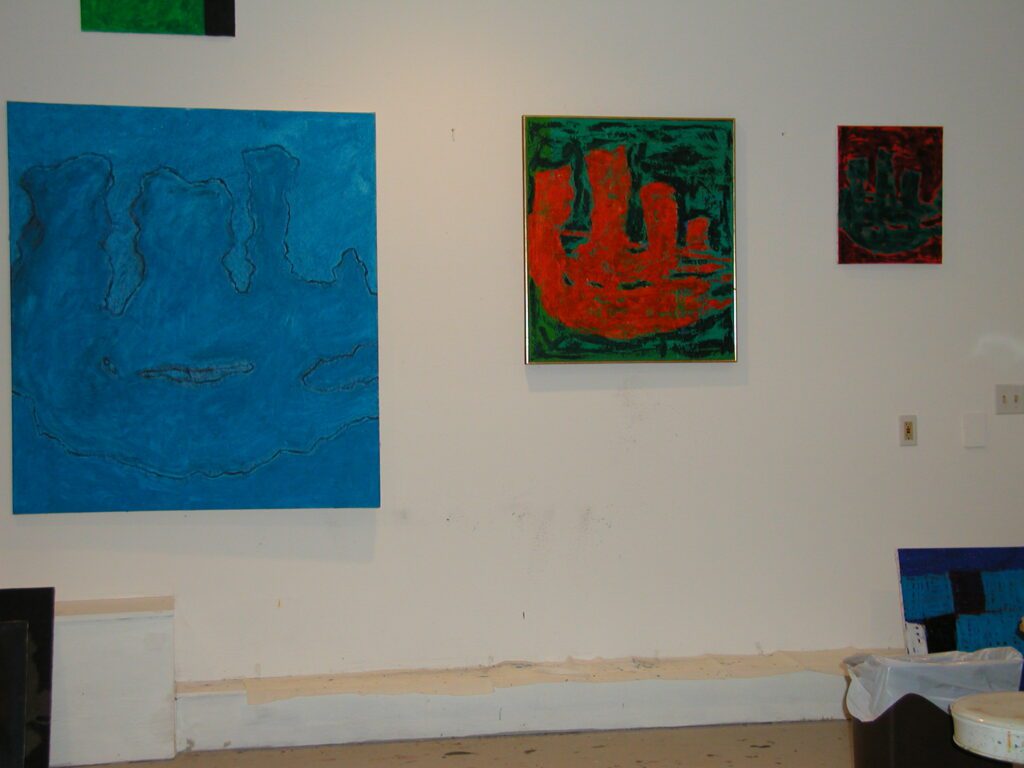
De Buck Gallery is pleased to present a survey of the works of Robert Baras (1930-2016). This selection features paintings from 1988 to 2009, which demonstrate the breadth of Baras’s style. Having started painting in the early 1980s, Baras came of age as an artist as minimalism was nearing its end and neo-expressionism (led by artists such as David Salle, Francesco Clemente and Julian Schnabel) was on the rise. Stylistically his work also owes debt to his predecessors, the Abstract Expressionists and color field painters. Fluctuating between geometric abstraction and lush figuration, his canvases display a range of symbols such as flowers, birds, trees, and geometric forms that together create a mysterious language that is distinctively his own. This exhibition will be available exclusively in De Buck Gallery’s online viewing room from August 17 – October 2, 2021.
Throughout his life, Baras developed a painterly vocabulary of luminescent colors, nebulous forms, and abstracted linear systems, drawn from the elements of the natural world. His work was made over a period of 30 years from 1980 to 2010 between Connecticut, New York, and Southern France, encompassing a powerful body of pictographic canvases with quasi-heraldic and minimalist shapes. His paintings express a paradoxical insistence on both representing objects in the natural world and on distilling them to fundamental, cryptic forms that hover between figuration and abstraction. These pictorial strategies reveal the heart of Baras’ work as capturing the effort involved in representation; as Christian Viveros-Fauné wrote in his essay The Expressive Fragment, Baras’ pictographic forms “serve as formal elements through which the artist—a highly independent, industrious, and largely self-educated fashioner of enigmatically fulsome symbols— plumbed the meaning, mechanics, and essence of painting.”
READ OR DOWNLOAD CHRISTIAN VIVEROS-FAUNE’S ESSAY, ‘THE EXPRESSIVE FRAGMENT’ HERE

Baras was born to Romanian-Jewish immigrant parents in the Bronx. He later enrolled in City College studying liberal arts, where he met and became friends with musicians and artists involved in the bohemian culture of the West Village. By 1950, his family had entered the textile industry and Baras developed a contemplative approach to the fabrics, textures, and colors, with a particular affinity for hues and patterns, which would influence his painting practice. When Baras sold the successful business in 1969, he was free to pursue his painting career and would do so for the next four decades.
As an artist beginning painting full time in his late forties, Baras’ maturity lent a depth, pace, and confidence in his intuition that allowed him to develop an artistic individuality free from the whims of trends and scenes. He was committed to preserving the privacy and self-reflection he believed were necessary for an artist, so he decided against showing and selling his work.
Baras and his wife Francine continued to live in New York City, where he embraced the creative community there of the many artists who defined American art in the mid-twentieth century. He and Francine became close friends and confidants of the painter Paul Waldman and his wife, Diane Waldman, Deputy Director and Senior Curator at the Guggenheim. Through the Waldmans, the Baras’ met and socialized with artists living there, including Roy and Dorothy Lichtenstein. Having studied at the Art Students League, Baras then studied at the School of Visual Arts on the encouragement of Mr. Waldman and completed his BFA with honors there in 1980.
READ OR DOWNLOAD DARREN JONES’S ESSAY ‘CUT FROM A DIFFERENT CLOTH’ HERE

From the mid-nineties and for the last twenty years of his life, Baras spent his time working between Connecticut and the South of France, pursuing new formulations after his artistic forbears and expanding his legacy until his death in 2016. As Darren Jones writes, “He is at once within, yet apart; known and unknown; his practice relative to his peers, but also distinct from theirs; his imagery recognizable, while insistingly refreshing. Robert Baras’ work offers the excitement of discoverability within the pedigree of his era’s aesthetic mien, contributing to the current artistic dialog through the cyclical nature of social and political trauma. This is the delicate balance of qualities that have earned his work its place within the firmament of American artistic invention.”

